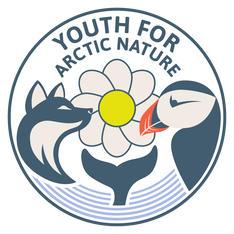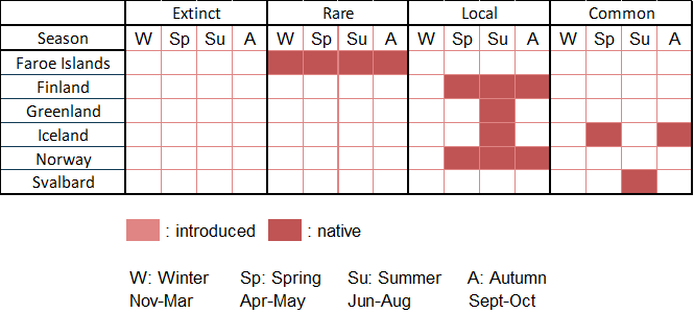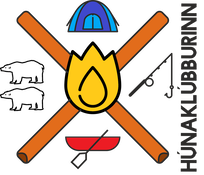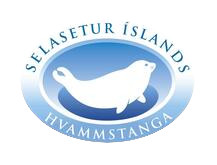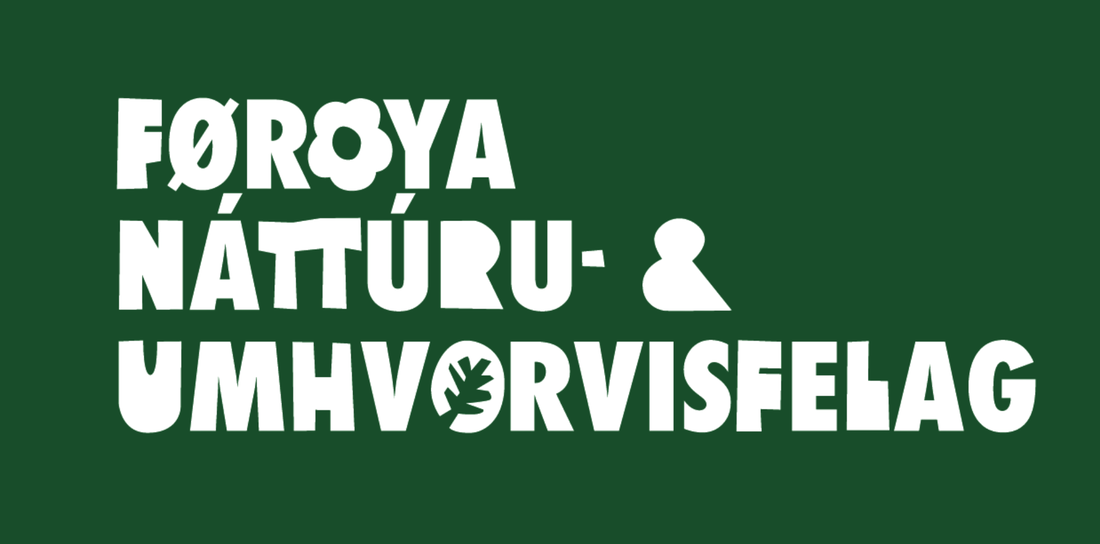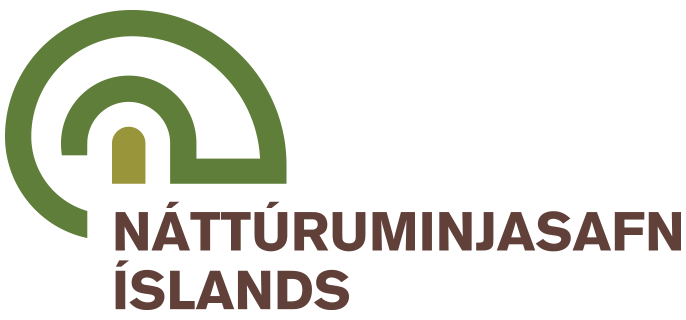|
Vulnerability: least concern (population increasing) Invasive: no Identification: easy (could only be confused with the Canada goose) Monitoring: easy (gathers in large flocks in spring and autumn) |
|
What is it? The barnacle goose is a rather small goose, with lengths between 58cm and 70cm for wingspans between 132cm and 145cm. It weighs about 2 kilograms. It is a goose of the Branta genus, also called black geese because their plumage is darker than most other geese. As a result, it is similar in plumage to its close cousins the brent goose and the Canada goose. However, the Canada goose, which is a common vagrant to the East Atlantic Arctic, has a primarily black face with brown wings. The Brent goose, another East Atlantic Arctic breeder, is smaller with an entirely black face. |
This video of barnacle geese was made and generously shared by Mark Barkan of avibirds.com.
|
|
Where is it? There are three main populations of Barnacle geese: one breeds in eastern Greenland and winters in Great Britain; one breeds in Svalbard and winters in Scotland; one breeds in western Siberia and winters in the North Sea. The Greenland population stops by Iceland on its migration route in spring and autumn, with up to 80,700 birds in 2013, almost 10 times more than when they were first counted in 1959. Barnacle geese have been breeding in Iceland since the 1960s, and they then started breeding in the southern region in the late 1980s. In 2014, more than 700 nests were seen in the area, a number that has been increasing every year. A few breeding pairs are found in the Faroe Islands, but they are presumed to originate from captive birds. In Finland and Norway, barnacle geese used to only be passage migrants, but they have also started to breed in some areas. They arrive at these sites earlier in the spring and stay longer than in the high Arctic.
|
|
Interesting facts |
- In Icelandic folklore, it was said that the barnacle goose survived the winter as a barnacle because of the shape of its beak, reminiscent of the mollusk.
- Barnacle geese often nest on high cliffs to escape arctic fox predation. However, food is rare on the cliffs. So, as soon as the goslings are born, they must jump from the cliffs, still unable to fly but light enough to glide. This jump is sometimes fatal, but it is necessary for them to find food in the valley.
Pictures
- "Barnacle Goose" by Andrej Chudy is licensed under CC BY-NC-SA 2.0.
- "Barnacle goose" by Edwyn Anderton is licensed under CC BY-NC-SA 2.0.
References
- Barnacle goose Branta leucopsis (2016). NatureGate. https://luontoportti.com/en/t/1587/barnacle-goose
- Birding Svalbard. (2021). Norwegian Ornithological Society. http://www.svalbardbirds.com/index.html
- BirdLife International (2022) Species factsheet: Branta leucopsis. Downloaded from http://www.birdlife.org on 01/06/2022.
- Hilmarsson, J. Ó. (2011). Icelandic Bird Guide: Appearance, Way of Life, Habitat (3rd ed.). Mal Og Menning.
- Mitchell, C. & Hall, C. 2020. Greenland barnacle geese Branta leucopsis in Britain and Ireland: results of the International census, spring 2018. Scottish Natural Heritage Research Report No. 1154.
- Olofson, S. (2012). Birds of the Faroe Islands. Visit Faroe Islands. www.visitfaroeislands.com.
- Sale, R. (2006). A complete guide to Arctic wildlife. Christopher Helm.
- Svensson, L., Mullarney, K., Zetterström, D., & Grant, P. J. (2010). Collins Bird Guide: The Most Complete Guide to the Birds of Britain and Europe (2nd ed.). Collins.
